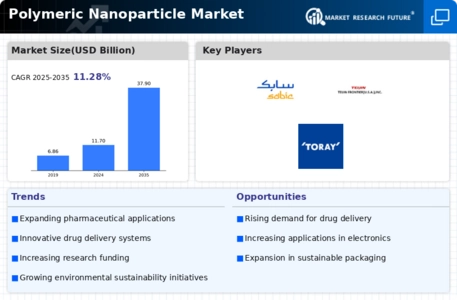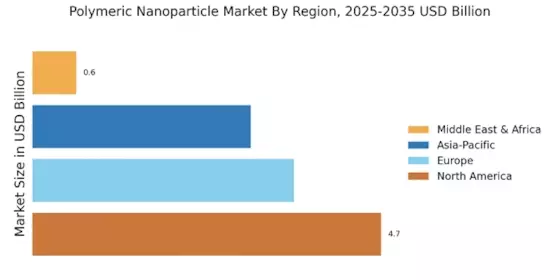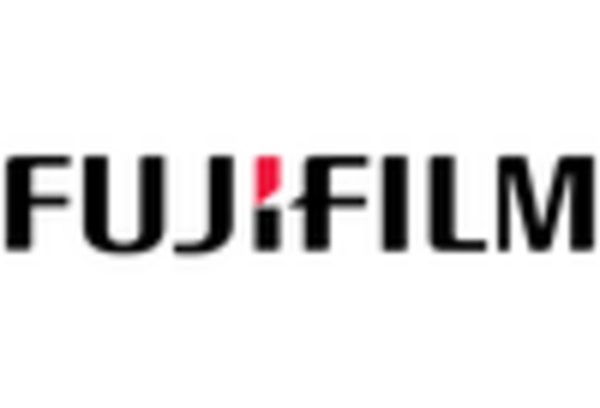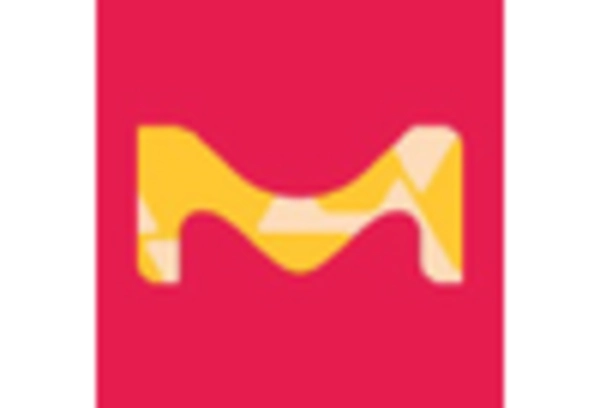Innovations in Nanotechnology
Innovations in nanotechnology are propelling the Polymeric Nanoparticle Market forward, as researchers and manufacturers explore new applications and formulations. The development of multifunctional nanoparticles, which can simultaneously deliver drugs and provide imaging capabilities, is particularly noteworthy. This advancement not only enhances the efficacy of treatments but also allows for real-time monitoring of therapeutic responses. The market is expected to witness a compound annual growth rate of approximately 15% over the next five years, driven by these technological advancements. As the field of nanotechnology continues to evolve, the potential applications for polymeric nanoparticles are likely to expand, further solidifying their importance in various industries.
Regulatory Support for Nanotechnology
Regulatory support for nanotechnology is fostering growth in the Polymeric Nanoparticle Market. Governments and regulatory bodies are increasingly recognizing the potential benefits of nanomaterials, leading to the establishment of guidelines that facilitate their safe use in various applications. This supportive regulatory environment is encouraging investment and innovation, as companies feel more confident in developing and commercializing new polymeric nanoparticle products. Furthermore, as regulations evolve to accommodate advancements in nanotechnology, the market is likely to expand, with projections indicating a steady increase in market value over the next decade. This trend underscores the importance of regulatory frameworks in shaping the future of the polymeric nanoparticle landscape.
Growing Focus on Personalized Medicine
The shift towards personalized medicine is significantly influencing the Polymeric Nanoparticle Market. As healthcare moves towards tailored therapies, polymeric nanoparticles are emerging as vital tools for delivering customized treatments. These nanoparticles can be engineered to respond to specific biological markers, ensuring that therapies are more effective and have fewer side effects. The market is projected to grow as healthcare providers increasingly adopt personalized approaches, with estimates suggesting a potential market size increase of over 20% by 2027. This trend highlights the adaptability of polymeric nanoparticles in meeting the unique needs of individual patients, thereby enhancing treatment outcomes.
Rising Demand in Pharmaceutical Applications
The Polymeric Nanoparticle Market is experiencing a notable surge in demand, particularly within the pharmaceutical sector. This growth is largely attributed to the increasing need for effective drug delivery systems that enhance bioavailability and reduce side effects. Polymeric nanoparticles facilitate targeted delivery, allowing for precise treatment of diseases such as cancer and autoimmune disorders. According to recent estimates, the pharmaceutical segment is projected to account for a substantial share of the market, potentially exceeding 40% by 2026. This trend underscores the critical role of polymeric nanoparticles in modern therapeutics, as they offer innovative solutions to longstanding challenges in drug formulation and delivery.
Increasing Investment in Research and Development
Investment in research and development is a key driver for the Polymeric Nanoparticle Market, as companies and academic institutions seek to unlock the full potential of these materials. Enhanced funding is facilitating the exploration of novel polymeric formulations and their applications across diverse fields, including medicine, electronics, and environmental science. This influx of capital is expected to lead to breakthroughs that could significantly alter market dynamics. For instance, the development of biodegradable nanoparticles is gaining traction, aligning with sustainability goals and regulatory requirements. As R&D efforts intensify, the market is likely to see a proliferation of innovative products that cater to evolving consumer needs.


















Leave a Comment